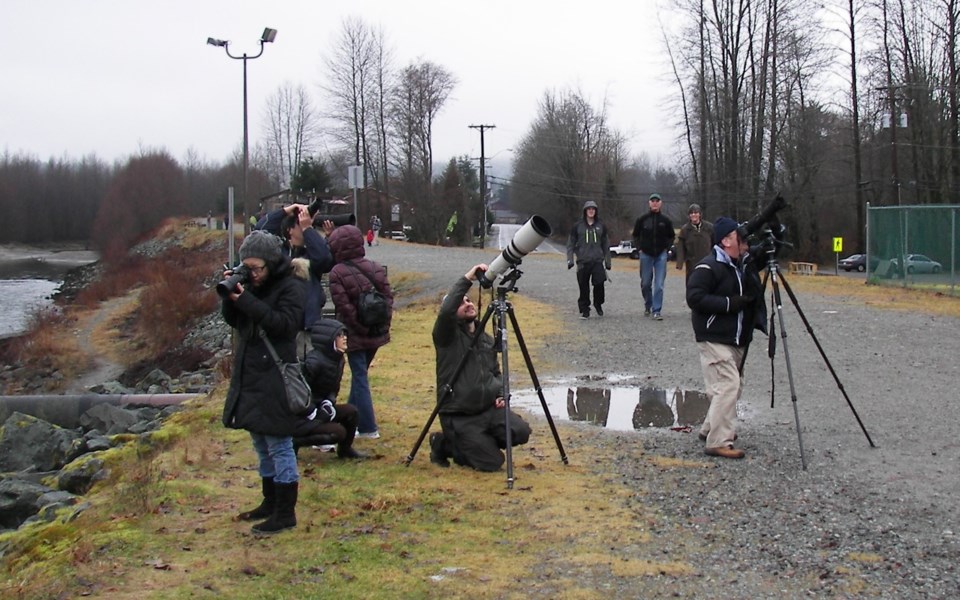Volunteer eagle counters in Squamish found 655 eagles on Sunday (Jan. 8). The volunteers set out early in the morning to tally all the eagles spotted from the tip of Howe Sound north to the Elaho River.
The annual count, which is held on the first Sunday of the year, is a barometer that offers a fact-based look at the health of the eagle population, said the host of the count. Thor Froslev, the owner of the Brackendale Art Gallery, has been hosting the bird count for the last 26 years with his wife Dorte.
According to Froslev, the count gives the science world a glimpse into the overall health of the area.
In 1994 the counters spotted 2,422 eagles and between 1998 and 2007 the count fell below 1,000 eagles only once. Between 2008 and 2010 the counters found between 500 and 700 eagles. Last year was a poor weather year in which counters spotted 432 eagles. The only year counters spotted fewer eagles was in 1986 when 408 eagles were found in the first year of the count.
The average number of eagles tallied over the course of the first 25 years of the count was 1,597.
Froslev, a member of the Squamish Streamkeepers group, said the salmon population in Squamish has declined and he believes fewer salmon means fewer eagles. He shared his theory of what is bringing down the salmon population in Squamish.
"I believe it is the fish farms that is to blame for all of that," he said after the count wrapped up. According to Froslev, sea lice are infecting native salmon populations and he believes the lice come from fish farm operations along the coast.
According to the B.C. Salmon Farmers Association, extensive research shows that mature Pacific salmon are resistant to damage from sea lice.
The Department of Fisheries and Oceans (DFO) currently has the following statement posted on its website: "There continues to be surges of (mis)information circulated about sea lice and its impact on aquaculture in B.C., and more specifically the Broughton Archipelago. DFO is committed to protecting our finfish stocks, both farmed and wild. With this commitment in mind DFO researchers and scientists work diligently to ensure the safety and sustainability of both aquaculture and wild salmon fisheries."
A total of 53 volunteer eagle counters spent the morning tallying eagles and other birds. Hawks, swans blue heron, kingfishers, a goshawk, dippers and ducks were also spotted.
Check Thursday's edition of Pique Newsmagazine for more information on the eagle count.




